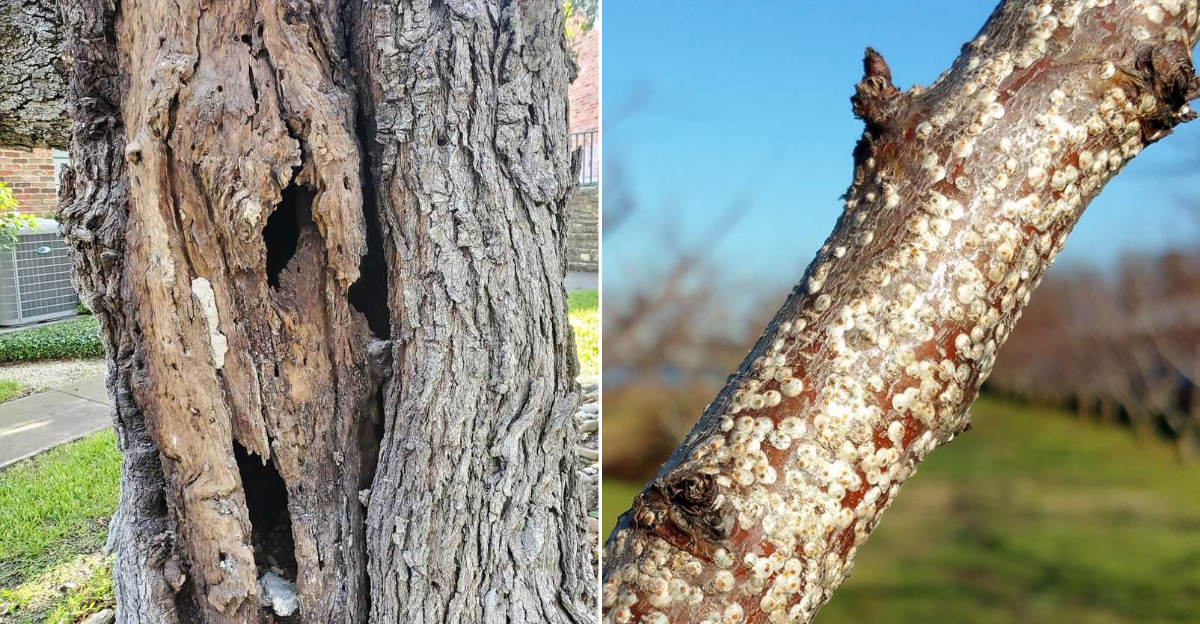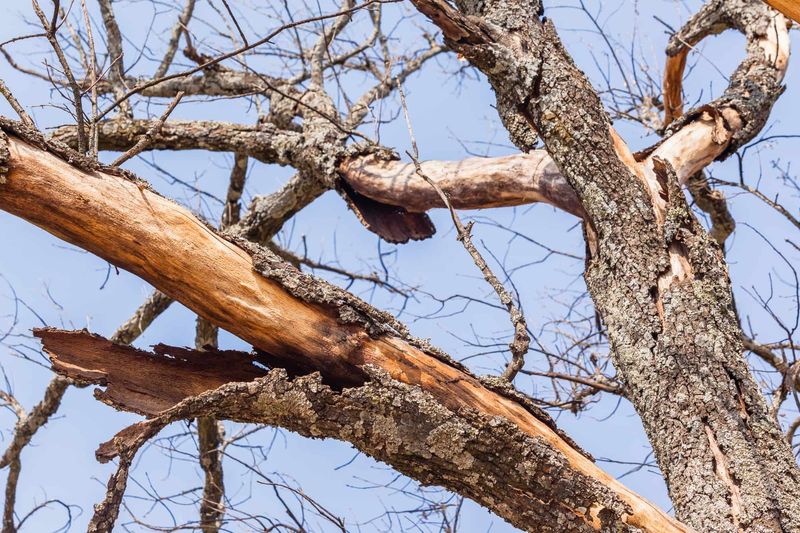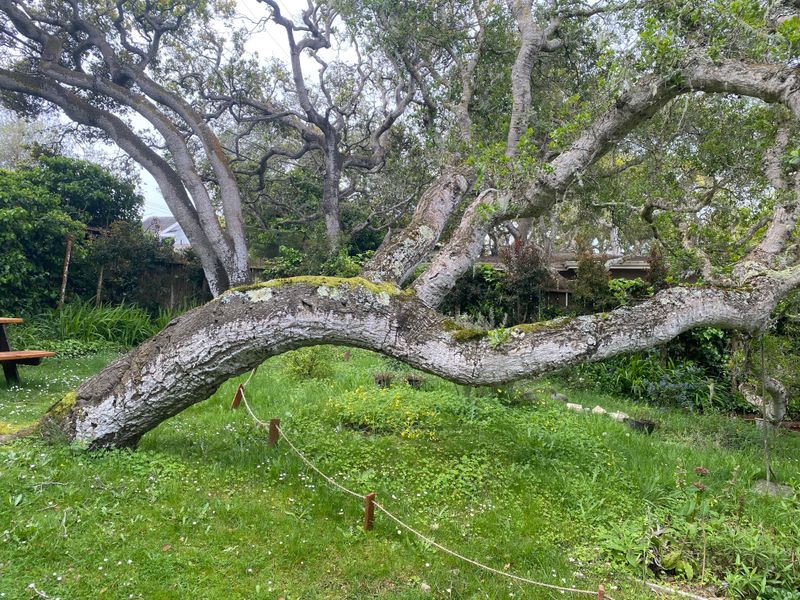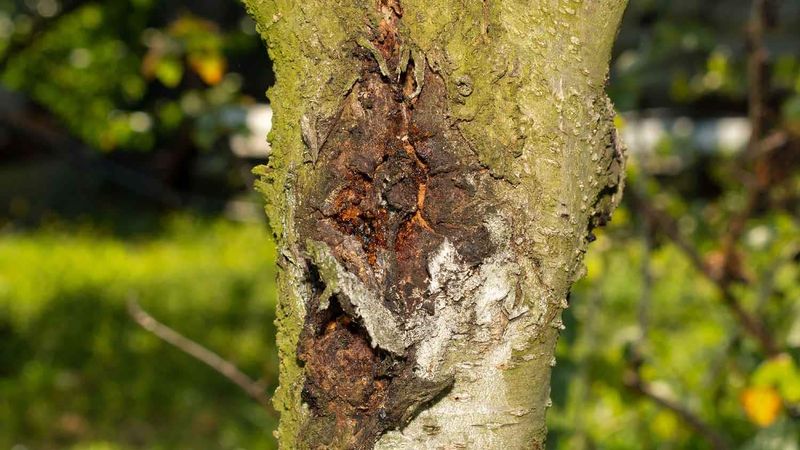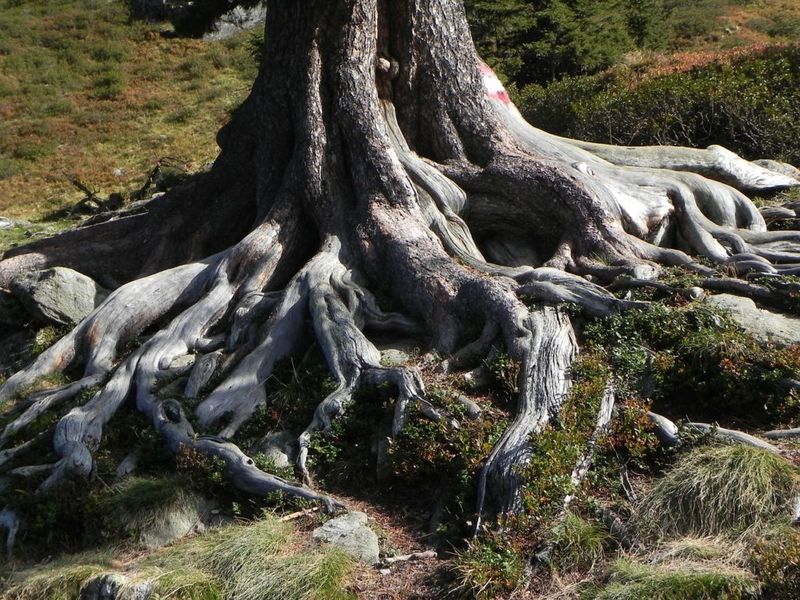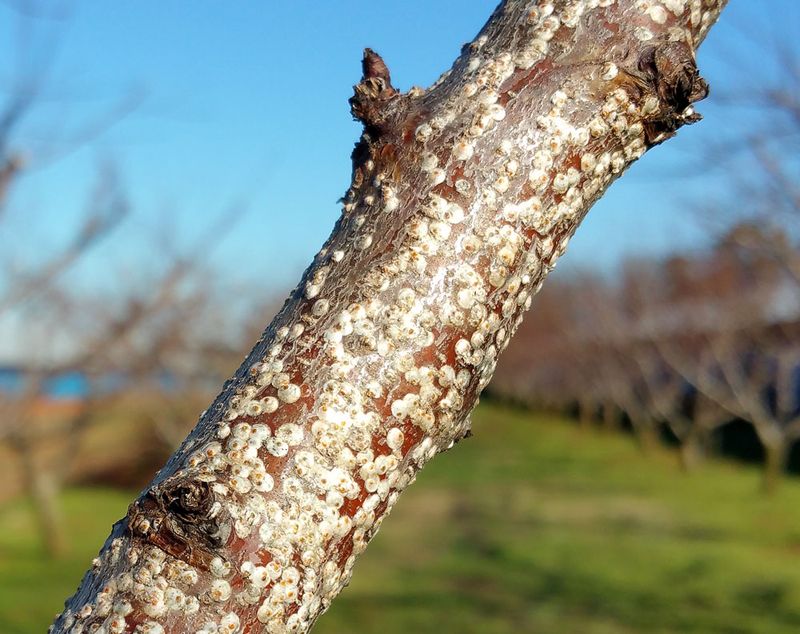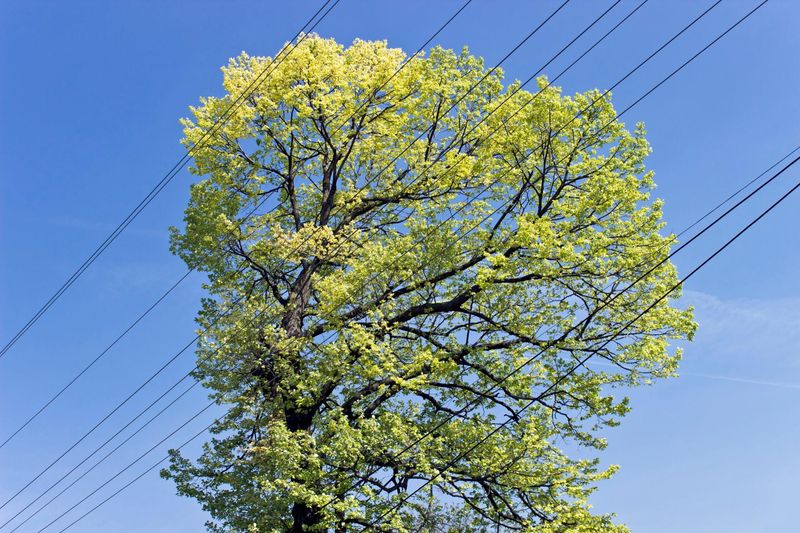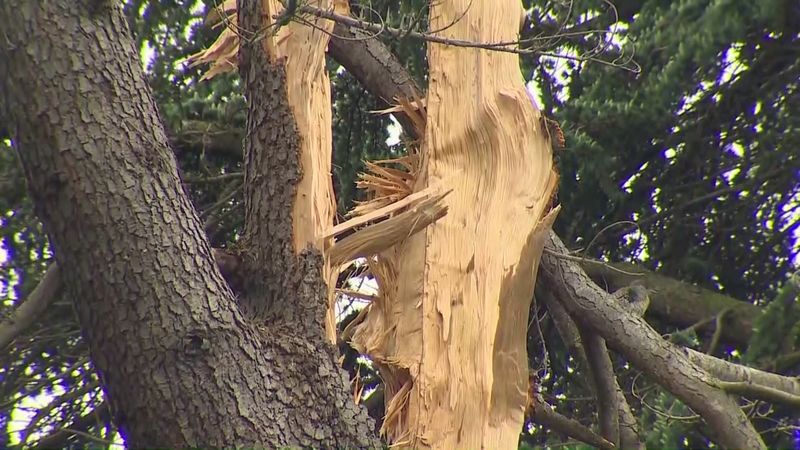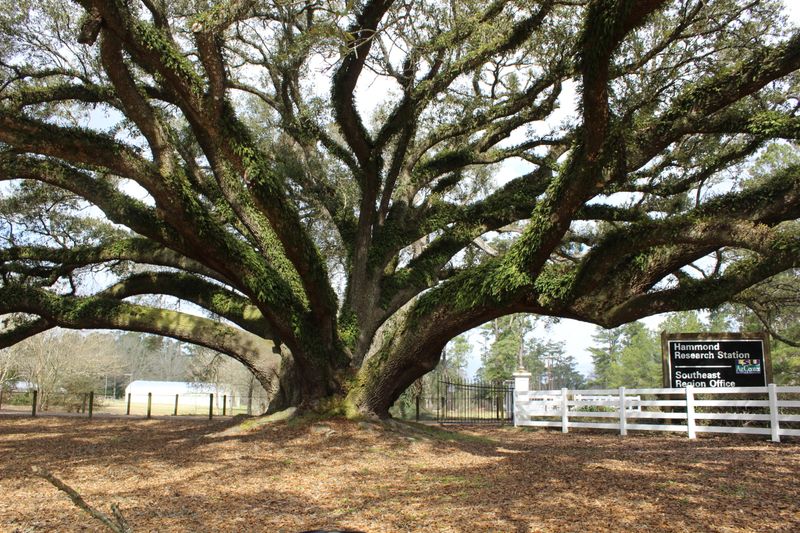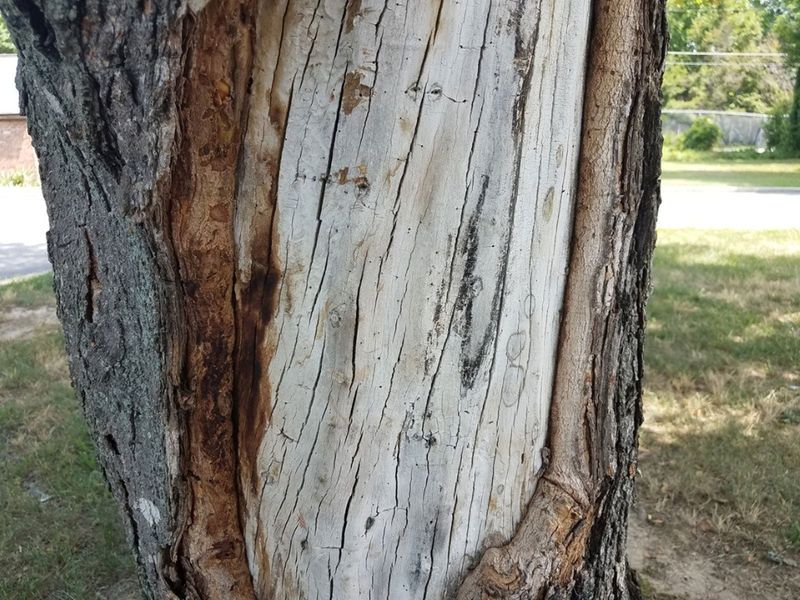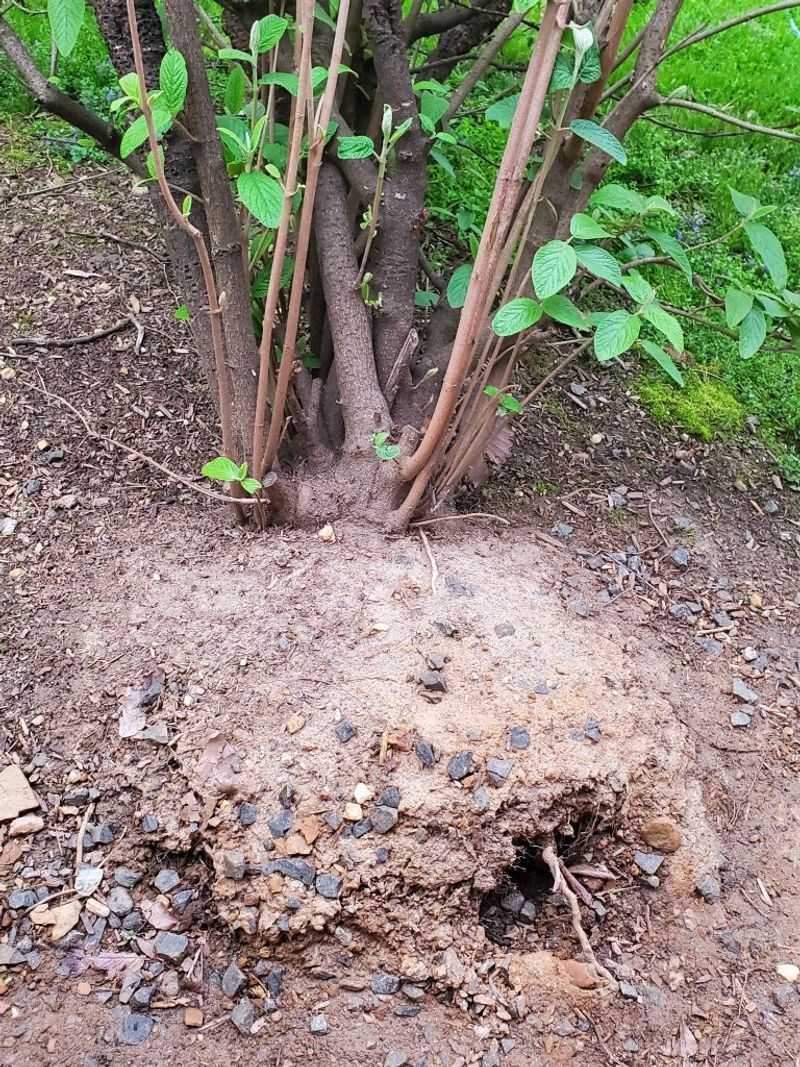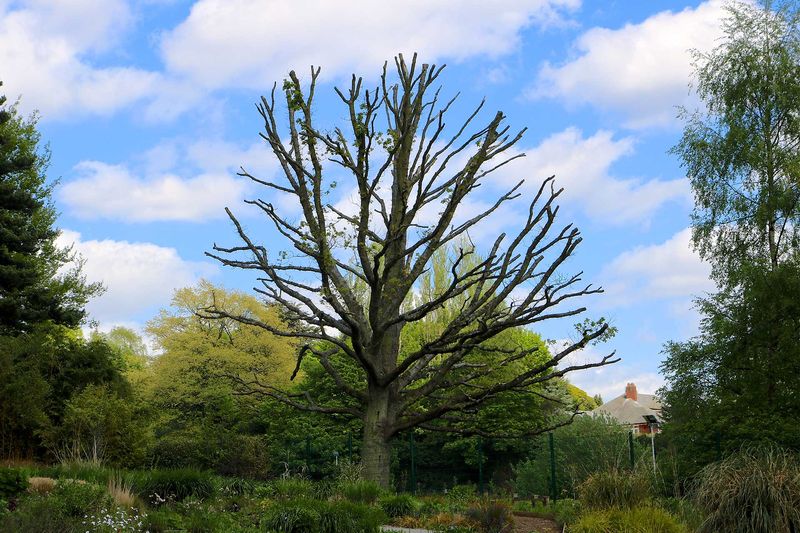Homeowners often cherish the trees in their yards for the shade, beauty, and wildlife they bring. However, there are times when a tree may pose a threat or become a nuisance, necessitating its removal.
Knowing when it’s time to say goodbye to a tree can protect your property and keep your surroundings safe. Here are 13 signs that it might be time to remove a tree from your yard.
1. Dead Limbs
Spotting dead limbs on your tree? This could be a sign that your tree is in distress. Dead branches not only look unsightly, but they pose a risk of falling and causing damage. Addressing this issue promptly can prevent accidents.
The presence of multiple dead limbs indicates poor tree health. It might be time to consider removal before things worsen.
Consulting a professional arborist can provide clarity on the best course of action. Prioritize safety by acting early to avoid unexpected incidents.
2. Leaning Structure
A tree that leans, especially after a storm, can be a ticking time bomb. Such trees might fall unexpectedly, especially during adverse weather conditions. A leaning tree may have a compromised root system.
In such cases, removal becomes necessary to avoid disaster. Professional assessment is crucial to understand the risk it poses. Taking proactive steps ensures both property safety and peace of mind.
3. Fungal Growth
Notice mushrooms or fungi at the tree base? This is often a red flag signaling internal decay. Fungal growth suggests that the tree’s structural integrity is compromised. Ignoring this can lead to unexpected tree failure.
Consulting with tree care experts can help determine the extent of the problem. In many cases, removal is the safest option. Protect your home and family by addressing this issue promptly.
4. Cavities in the Trunk
Cavities or hollows in a tree’s trunk can weaken the entire structure. This makes it susceptible to breakage during storms or high winds. Such defects often go unnoticed until significant damage has occurred.
Regular inspections can help spot these issues early. Considering tree removal can avert potential hazards. Peace of mind comes from taking action before disaster strikes.
5. Root Damage
Healthy roots are vital for a tree’s stability. When roots are damaged, the tree’s ability to stay upright is compromised.
Construction or landscaping projects often result in root harm. If you notice visible root damage or upheaval, removal may be necessary. This proactive approach prevents future mishaps. Secure your property by addressing root problems early.
6. Excessive Shedding
Is your tree shedding more than usual? Excessive leaf fall can signify stress or disease. This is a signal that your tree needs attention. Unusual shedding may indicate underlying health issues.
Regular monitoring helps identify whether removal is needed. Consulting with an arborist can provide insights into the tree’s condition. Taking action now can prevent future complications.
7. Pest Infestation
Insects can wreak havoc on trees, leading to severe damage. If you notice signs of pest infestation, your tree might be in jeopardy. Termites, borers, and other pests can deteriorate a tree’s health rapidly.
If untreated, the tree may become a safety hazard. Professional intervention can determine if removal is the best option. Acting swiftly can eliminate potential risks.
8. Proximity to Power Lines
Trees growing too close to power lines pose significant safety risks. During storms, they could cause power outages or even fires. Utility companies often trim such trees, but sometimes removal is the better choice.
Ensuring a safe distance from power lines is crucial. Consult local regulations to guide your decision. Taking timely action safeguards both your home and community.
9. Lightning Strikes
Lightning can inflict severe damage to trees, leaving them weakened or hollowed out. A tree struck by lightning might be compromised and unstable. Assess the damage with professional help to determine the tree’s fate.
Sometimes, removal is the only viable option. Ensuring safety is paramount when dealing with lightning-damaged trees. Quick action can prevent future dangers.
10. Excessive Canopy
A dense canopy can be both a blessing and a curse. While it offers shade, it can also hinder sunlight and airflow, affecting nearby plants. Thinning might help, but sometimes the issue is more profound.
An arborist can assess whether removal is necessary. Balancing canopy health with overall garden vitality is essential. Making informed decisions ensures a healthy landscape.
11. Damaged Bark
Bark acts as a protective layer for trees. Visible damage or peeling can expose the tree to diseases and pests. Such vulnerabilities require immediate attention. Ignored, they can lead to severe internal issues.
Sometimes, removal is the best remedy to prevent spread. Maintaining tree health involves vigilant monitoring and timely interventions.
12. Sudden Soil Heaving
Sudden soil heaving around a tree can be alarming. It often suggests root upheaval or instability.
When you notice such changes, assess the tree’s condition urgently. Ignoring soil movement can result in unexpected falls. Professional evaluation is crucial to decide the right course. Safety comes from addressing these changes swiftly.
13. Declining Health
Trees, like any living organism, can face health declines. Sparse foliage and discolored leaves are tell-tale signs. A once vibrant tree losing its vigor may require removal. Regular health checks help decide timely interventions.
Collaborating with experts ensures informed decisions. A healthy landscape starts with attentive care.
